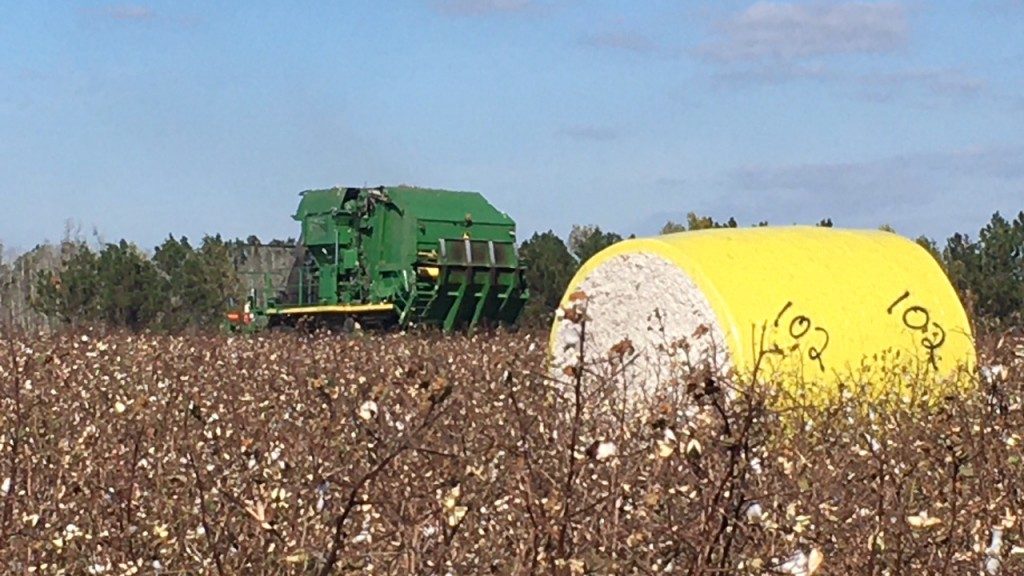This has been a challenging week for the agricultural community in Colquitt County and the big story this week included the strong storms and hail that occurred on Wednesday night. The amount of damage from the hail storm on cotton, corn, and vegetables depends on the location in the county. Pictures of large hail have been circulating on social media and the picture below was hail that I picked up in my yard Wednesday evening.
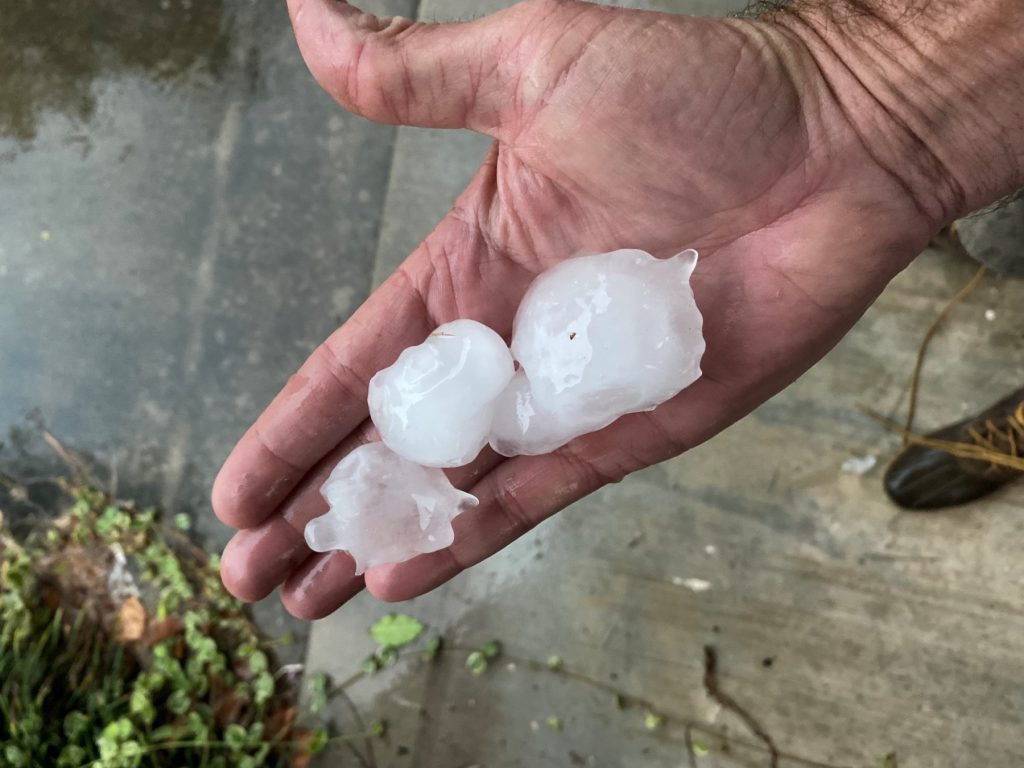
The observed rainfall totals from the last week from the National Weather Service can be seen below. Rainfall totals range from 3 to upwards of 8 inches with the heavier rainfall occurring in the north and northwest part of Colquitt County. Field conditions are wet thus making this situation worse and the forecast for the upcoming week has evaluated rain chances.
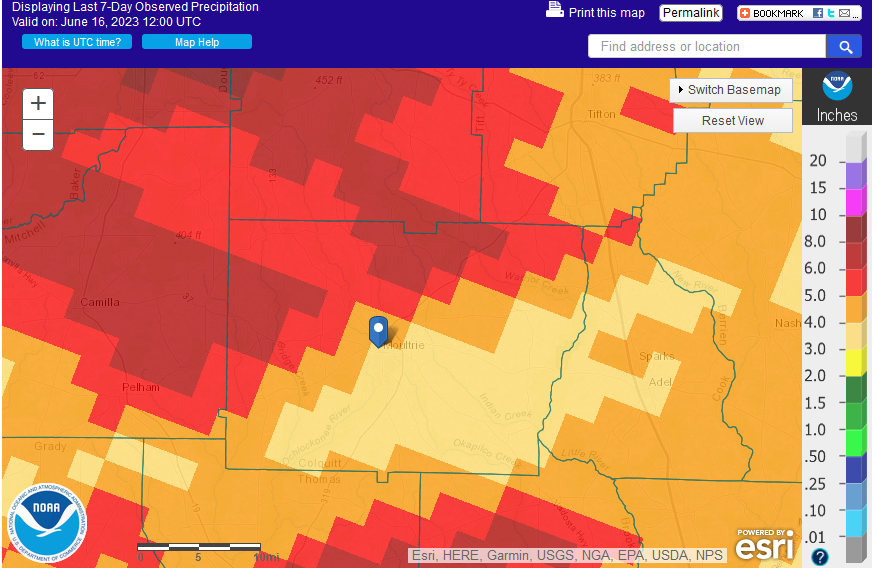
Local growers have had their share of hail this year. The question about the frequency of hail events in Colquitt County has been asked numerous times this past week. According to the National Weather Service, 26 hail events were reported between 03/01/2000 and 03/31/2023 for the Colquitt County area. The table below shows the location, date, time, and size of hail.
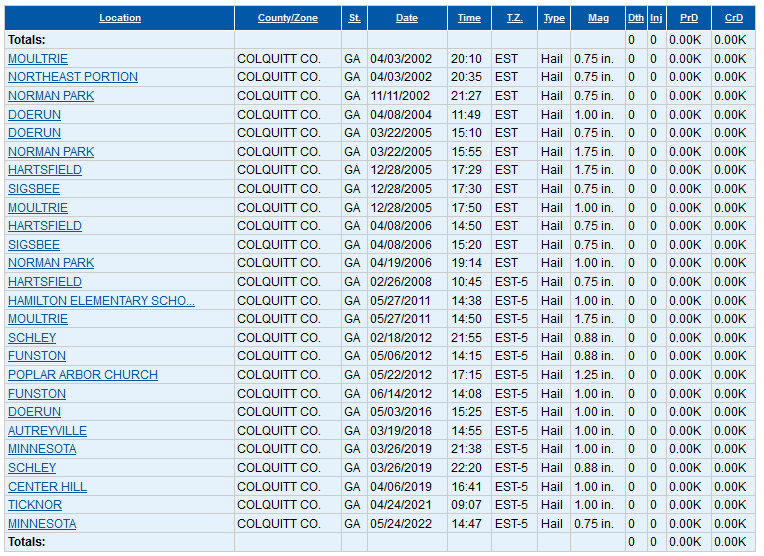
Cotton: The cotton crop ranges from 1 leaf to 10 leaf. Growers impacted by the hail need to evaluate damage because some fields have been hit hard by this event. Some growers were thinking about sidedress applications of nitrogen before the rain started. PGR applications were going to start this past week and there were a few reports of plant bugs. A few more thoughts from Dr. Camp Hand, UGA Cotton agronomist on hail damaged cotton:
- The second thing I would highly suggest doing is not making any rash decisions on a cotton crop today or tomorrow. In the next two days, make note of the fields that were damaged, make your crop insurance folks aware of those fields, then reevaluate them next week. The cotton will look terrible today and tomorrow, but within 5 to 10 days it should look better with a little warm weather and sunshine.
- First thing I would recommend doing is if your field was damaged by hail, call your crop insurance agent and make them aware.
- At this point, being today is June 15 and it is far too wet to get in the field to do anything, I would have a very hard time recommending a grower replant cotton. If by next week the plant stand is so bad that they need to walk away from their cotton crop, we’ll have to get creative on what they should replant. Keep in mind residual herbicides that have been applied and future rotations.
- The Mississippi State blog post mentions their cutoff for remaining plant population being 20,000 plants – approximately 1.4 plants per foot (with the caveat that they are uniformly spaced). I think we can still make great cotton with fewer plants that that given that the stand is uniform. If you go on calls next week to evaluate final plant stands following hail, please pay great attention to skips and stand uniformity.
- One of my favorite lines in this blog post from Mississippi State is “If there is a doubt, keep it.” I would stick to that. Cotton is an amazing plant and given the right conditions, will recover.
- If fields were severely defoliated or later planted cotton had cotyledons/terminals removed from hail, it will take time for the plants to recover. Thus, in these situations, treat these fields like late planted cotton. More aggressive pix strategies (after the plant begins to recover), reduced N rates, etc. to hasten maturity in that crop.
- Last thought – there is no magical product that will bring cotton out of hail damage. Right now, the plants that are damaged probably don’t even have enough leaf area to take up foliar fed fertilizer or other foliar products that “stimulate plant growth”. All the cotton needs is warm weather, sunshine, and time. Purchasing and spraying any product that is alleged to encourage plant growth following a hail event will likely not result in a return, thus making it a waste of money and diesel fuel.
Below is information from Mississippi State in reference to hail damaged cotton.
What should I do about hail damaged cotton stands?
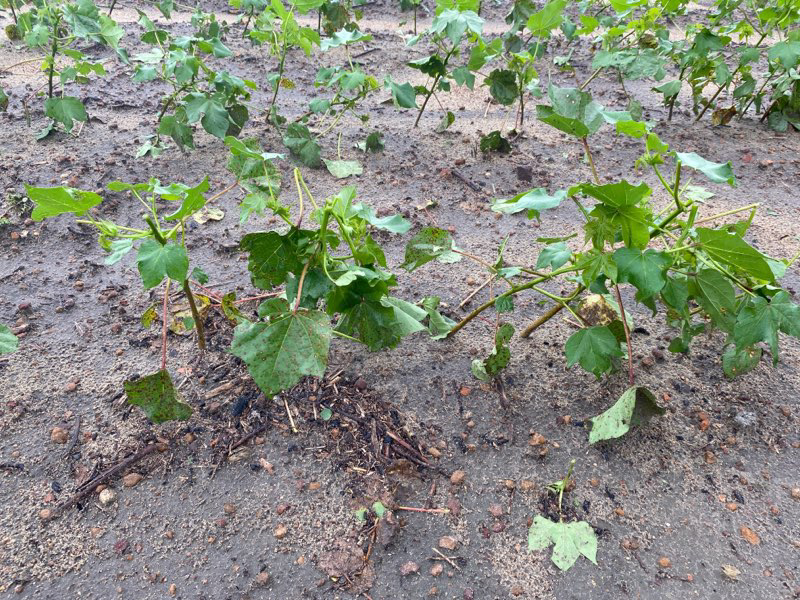
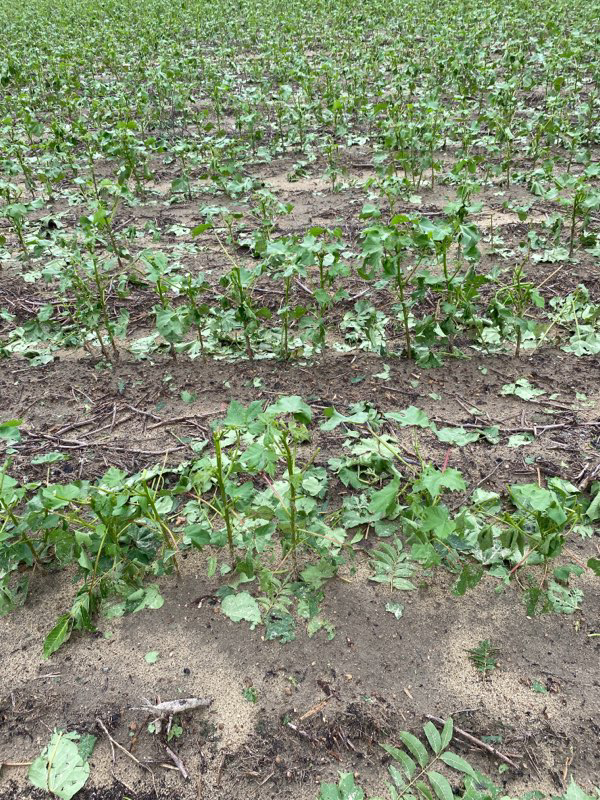
Corn: The area corn crop has been through numerous weather challenges this year. The crop ranges from RT to R3 (Late Milk stage). Several fields were impacted by hail this week and there are concerns about future grain and stalk issues resulting from this event. According to Dr. Bob Kemerait, currently, no Southern Rust has been found in Georgia but conditions are really good for it. Stinkbug populations are low in area corn fields.
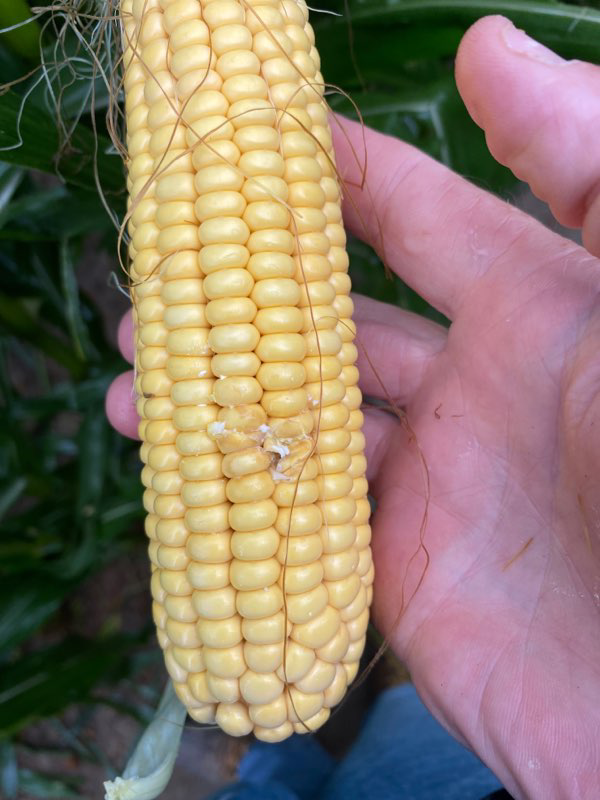
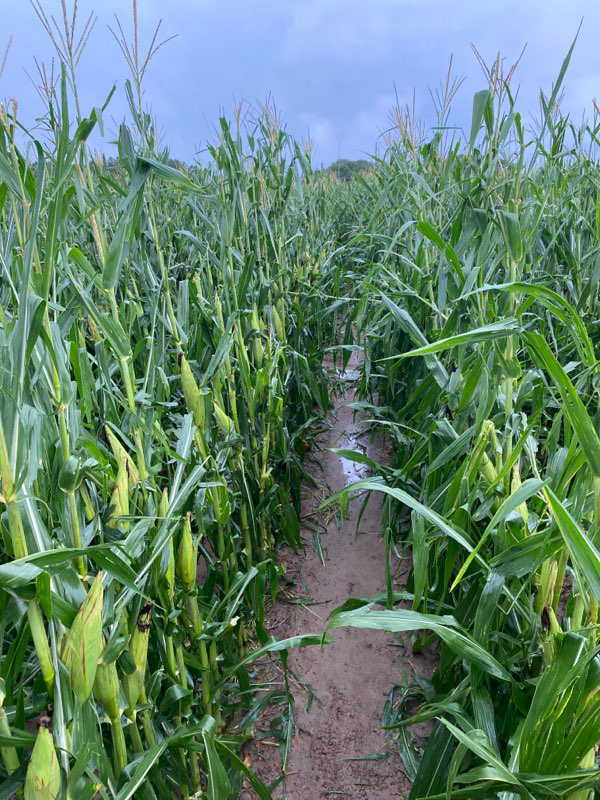
Information about evaluating hail damaged corn..
https://www.agry.purdue.edu/ext/corn/news/timeless/HailDamageLateSeason.html
https://extensionpublications.unl.edu/assets/pdf/ec126.pdf
http://corn.agronomy.wisc.edu/AA/pdfs/A069.pdf
Peanuts: Wet fields could hurt leaf spot management in peanuts by delaying the timely applications of fungicides. Lots of heavy rain and cooler soils could slow the onset and development of white mold in peanuts.
According to Dr. Eric Prostko, Since applications of POST herbicides will be delayed, experience tells me that many growers will want to apply broadleaf and grass herbicides together. Tank-mixing grass herbicides with broadleaf herbicides (Cadre + Select or 2,4-DB + Select), is labeled/legal but will often result in reduced grass control (~10-20%). Growers can increase the rate of the grass herbicide (within label) but I prefer a split application (grass herbicide first then broadleaf herbicide ~3-5 days later).
Cool, cloudy, wet weather has a significant influence on the cuticles of plant leaves (i.e. makes them thinner). Thus, pesticides applied during this type of weather can cause more crop injury symptoms.
Residual weed control will likely be compromised (shorter than normal). Applications of additional residual herbicides should be strongly considered (Anthem Flex, Dual Magnum, Outlook, Warrant, Zidua).
It is also very likely that some growers will not be able to get back into their fields on a timely basis to make POST herbicide applications. There are no POST herbicides, in any of my crops, that can consistently control a pigweed that is bigger than about 3-4″ tall. Thus, applying herbicides to very large weeds (revenge spraying) is a waste of time and money! Hand-weeding, mechanical cultivation, non-selective applicators, and mowing are the only effective options for large weeds.
Rain free periods for peanut herbicides.. The table below shows rain free period for several peanut herbicides. The source is the peanut section of the UGA Pest Management Handbook.
| Herbicide | Rainfree Period (Hrs) |
| Ultra Blazer | 4 |
| Basagran | 4 |
| Clethodim | 1 |
| 2,4-DB | 1 |
| Cadre | 3 |
| Cobra | 30 minutes |
If you have questions please contact you local county Extension agent.
Have a great week.
Jeremy M. Kichler
Colquitt County Extension Coordinator
The University of Georgia Cooperative Extension does not endorse or guarantee the performance of any products mentioned in this update.
